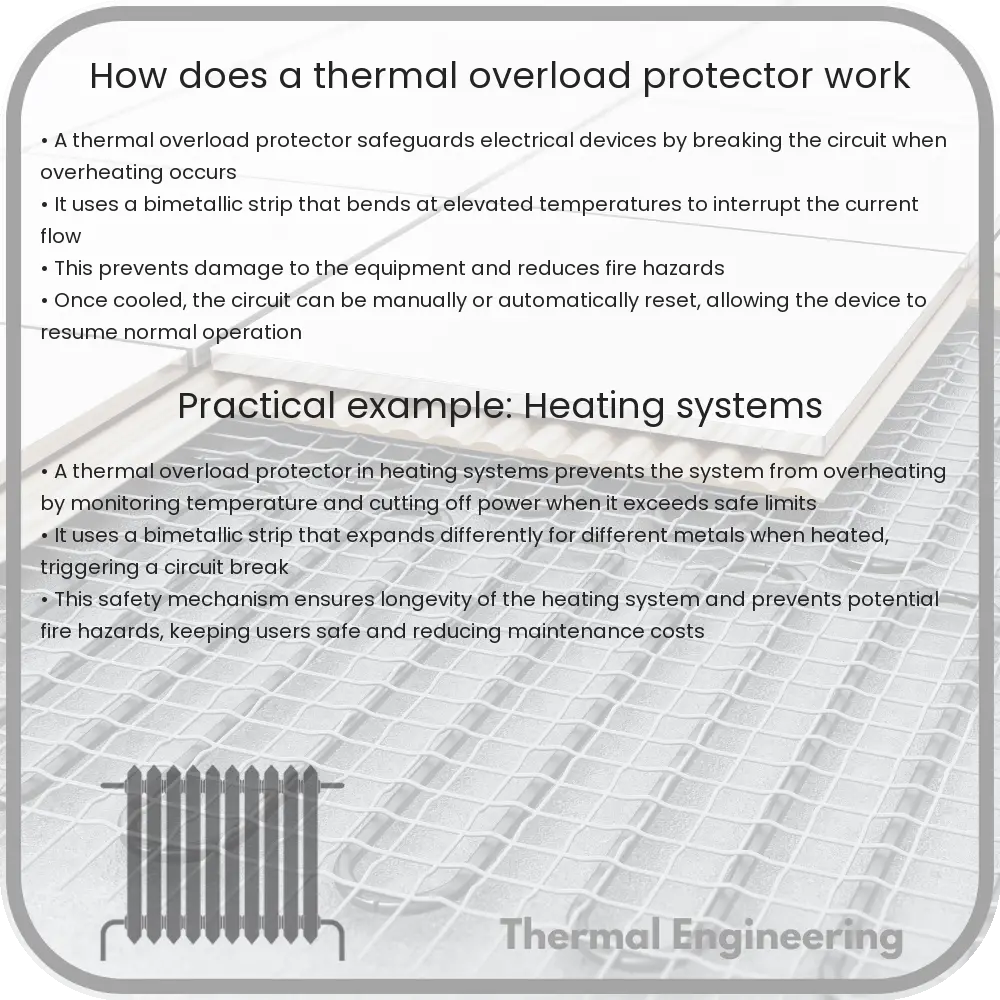Learn about thermal overload protectors, crucial for preventing equipment damage by monitoring and controlling excessive temperatures.

Understanding the Function of a Thermal Overload Protector
Thermal overload protectors are crucial components in various electrical and mechanical systems, safeguarding them from damage due to excessive heat. These devices are engineered to interrupt power or control signals when a critical temperature threshold is surpassed, thereby preventing potential failures and ensuring safety and longevity of equipment. This article explores the principles behind thermal overload protectors, how they work, and why they are essential in engineering systems.
Basic Principle of Operation
The primary function of a thermal overload protector is to monitor the temperature of a machine or an electrical circuit. These protectors are particularly useful in applications prone to overheating issues, such as motors, compressors, and transformers. When the system begins to operate beyond its temperature safety margin, the thermal overload protector triggers a mechanism that either interrupts the current or signals the system to shut down to prevent damage.
Types of Thermal Overload Protectors
There are several types of thermal overload protectors, each suited to different applications and operational mechanisms:
- Bimetallic Strips: This type commonly utilizes a strip made from two different metals, each with a different coefficient of thermal expansion. When the temperature rises, the disparity in expansion rates causes the strip to bend. This bending action can break an electrical circuit, stopping the current flow and ceasing operation.
- Thermocouple Devices: Often used in more complex systems, thermocouples measure the temperature directly and can provide feedback to a controller. This feedback is used to regulate or stop the operation of the machine when predetermined temperature thresholds are exceeded.
How Thermal Overload Protectors Enhance Safety and Efficiency
Thermal overload protectors play a significant role in maintaining the safety of electrical systems. By detecting and responding to temperature anomalies, they prevent the risk of fire or structural damage that could occur from overheating. Moreover, these devices enhance the efficiency of electrical devices by ensuring they operate within their optimal temperature ranges, thereby extending the lifespan of the components and reducing maintenance costs.
Whether in household appliances, industrial equipment, or automotive applications, the integration of thermal overload protectors is a testament to advances in safety and engineering practices. This allows consumers and industries alike to rely on their electrical systems with greater confidence, knowing that preventative measures are in place to handle thermal risks.
Conclusion
In conclusion, thermal overload protectors are essential devices in the engineering world, designed to detect high temperatures and prevent damage by interrupting the power supply. Understanding the types and functionalities of these devices helps in choosing the right protector for any specific application, ensuring both safety and operational efficiency.
By integrating thermal overload protection into systems, engineers and designers can significantly reduce the risk of equipment failure due to overheating, ensuring that machines operate safely at optimal conditions over extended periods. Thus, these protectors not only safeguard equipment but also contribute to sustainable engineering practices by minimizing the need for repairs and replacements.